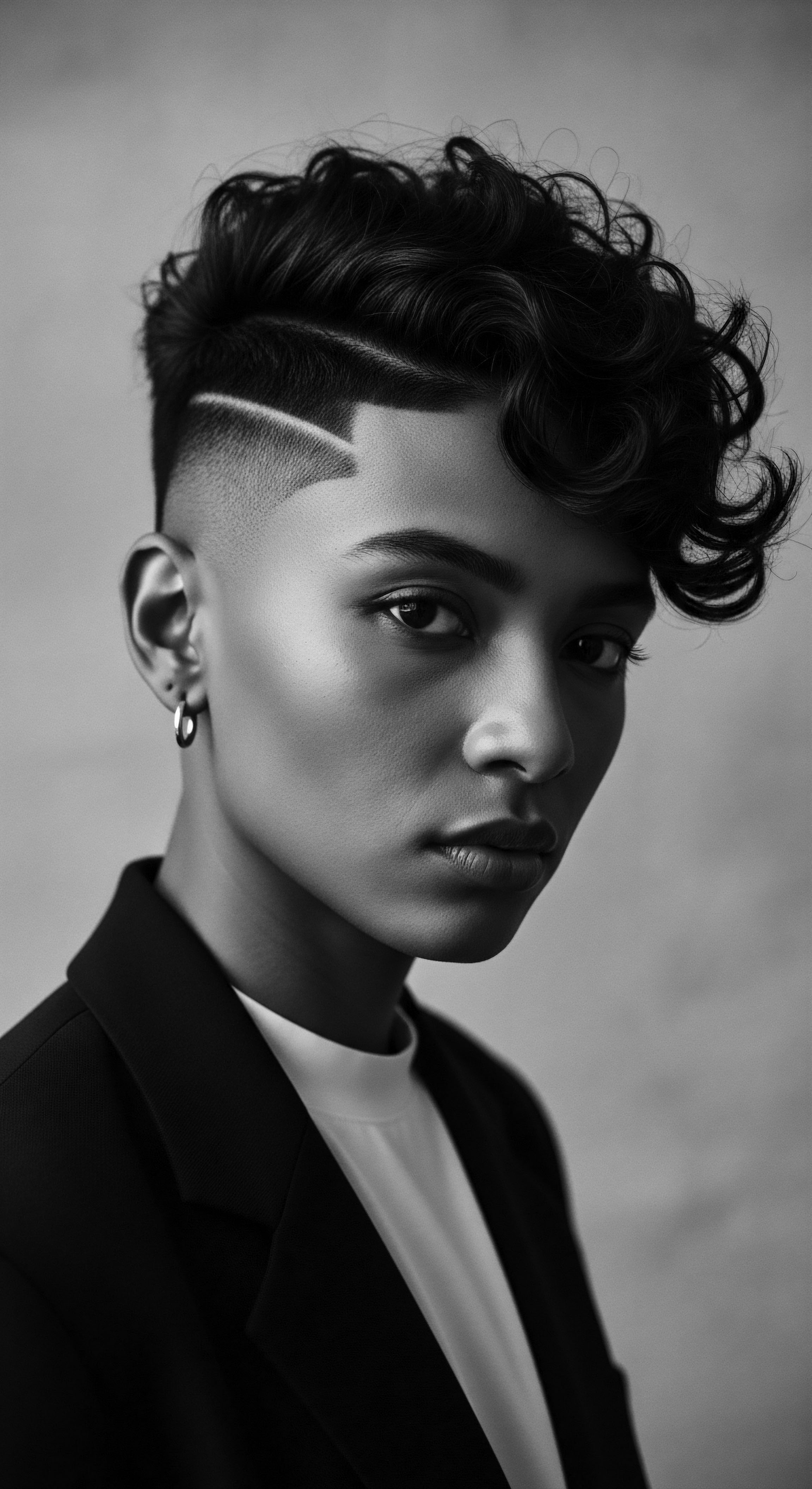
Fundamentals
The intricate world of hair, a realm often approached with wonder and sometimes with a touch of bewilderment, finds its bedrock in something elemental ❉ our ancestral inheritance. When we speak of Genetic Hair, we are tracing the very first whispers of our hair’s character back to the blueprint held within our DNA. It is the fundamental explanation for why a strand may possess the gentle curve of a winding river, the resolute straightness of a desert horizon, or the resilient coiling of a vine seeking sunlight.
This initial designation refers to the inherited characteristics that shape our hair’s intrinsic nature—its curl pattern, its diameter, its density, and its overall growth behavior. From the moment of our conception, a unique cellular narrative begins to unfold, dictated by the legacy passed down through generations, setting the stage for the distinctive crowning glory each of us bears.
Think of the hair growing from your scalp as a living testament to an unbroken chain of ancestors, each contributing their own genetic echoes to its form. The curl, the spring, the very way a strand captures or reflects light is not a random happenstance. Instead, it is a predetermined expression of biological directives. These directives influence the shape of the hair follicle, nestled beneath the skin, and the manner in which keratin proteins assemble to form the hair shaft itself.
A follicle that is largely circular in cross-section tends to yield straight hair, while an oval or elliptical follicle shapes hair into waves, curls, or even tight coils. The distinctiveness of African textured hair, with its remarkable spectrum of spirals, bends, and kinks, is a particularly poignant illustration of this genetic predilection, often arising from highly elliptical follicles that produce hair strands with a characteristic S-shape or zigzag pattern when viewed microscopically.
Genetic Hair is the ancestral story etched into each strand, dictating its inherent curl, thickness, and growth patterns from the very moment of inception.
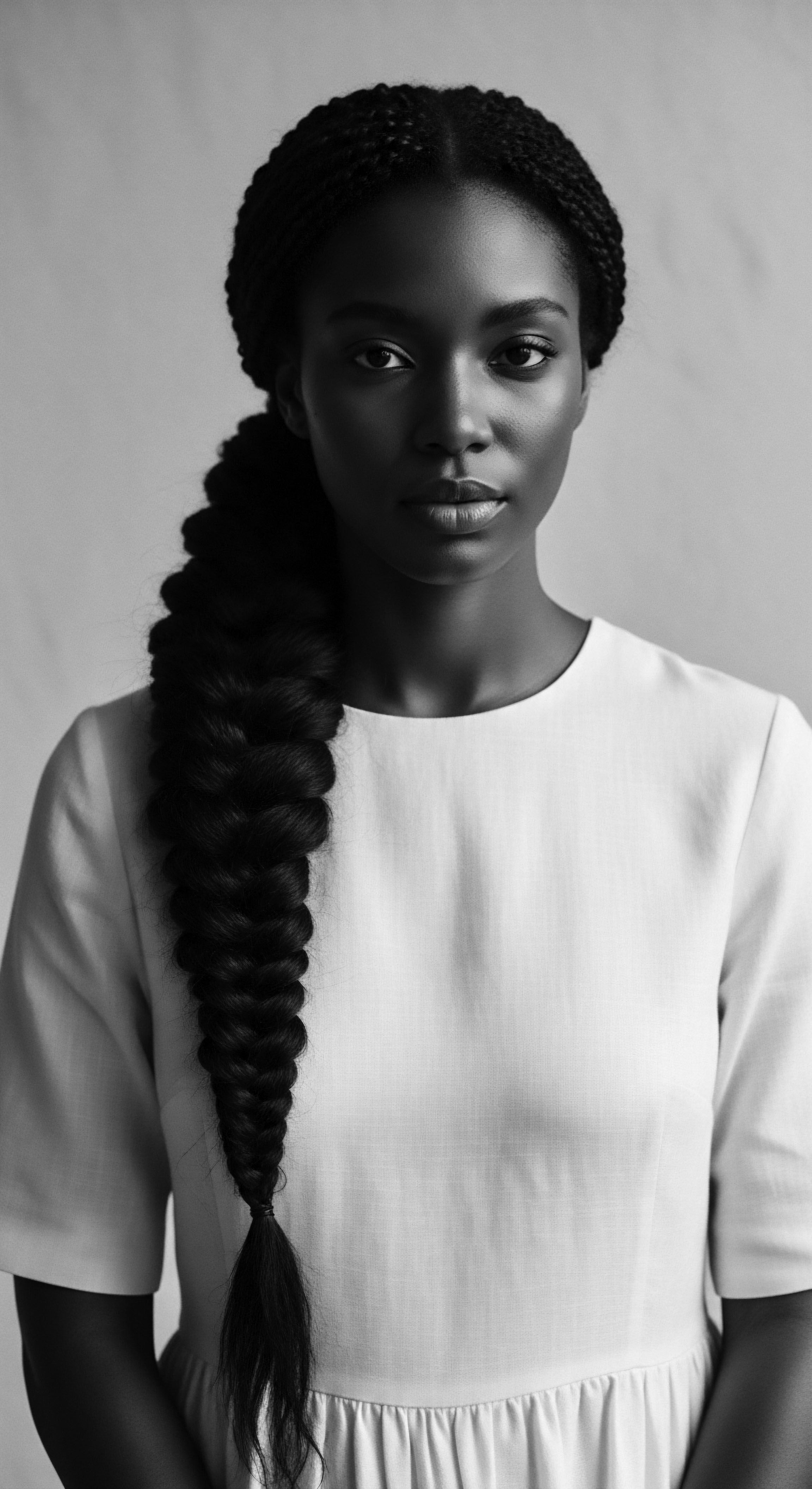
The Seed of Identity ❉ Early Delineations
The initial understanding of Genetic Hair rests on this biological foundation ❉ it is the inherent predisposition. This predisposition determines the hair’s primary characteristics, before any external manipulation or environmental influence comes into play. It is the unadorned truth of our hair, a truth that speaks volumes about our ancestral journey and the environments that shaped our forebears. For communities of African descent, the robust nature of tightly coiled hair, for example, is not merely a cosmetic attribute; it hints at deep historical adaptations.
These coils, it has been posited, provided unique benefits for temperature regulation and sun protection in equatorial climates, offering a natural canopy that allowed air circulation while shielding the scalp from intense ultraviolet radiation. The designation of Genetic Hair therefore encompasses both the visible expression of hair traits and the evolutionary narrative woven into its very structure.
Understanding this primary meaning of Genetic Hair allows us to appreciate the diversity of human hair not as a superficial trait but as a profound aspect of human biological heritage. It invites us to consider how our hair is an echo from the source, a physical manifestation of ancient adaptations and migrations. This initial comprehension also serves as a compassionate reminder that hair’s intrinsic tendencies are not flaws to be corrected but unique endowments to be honored.
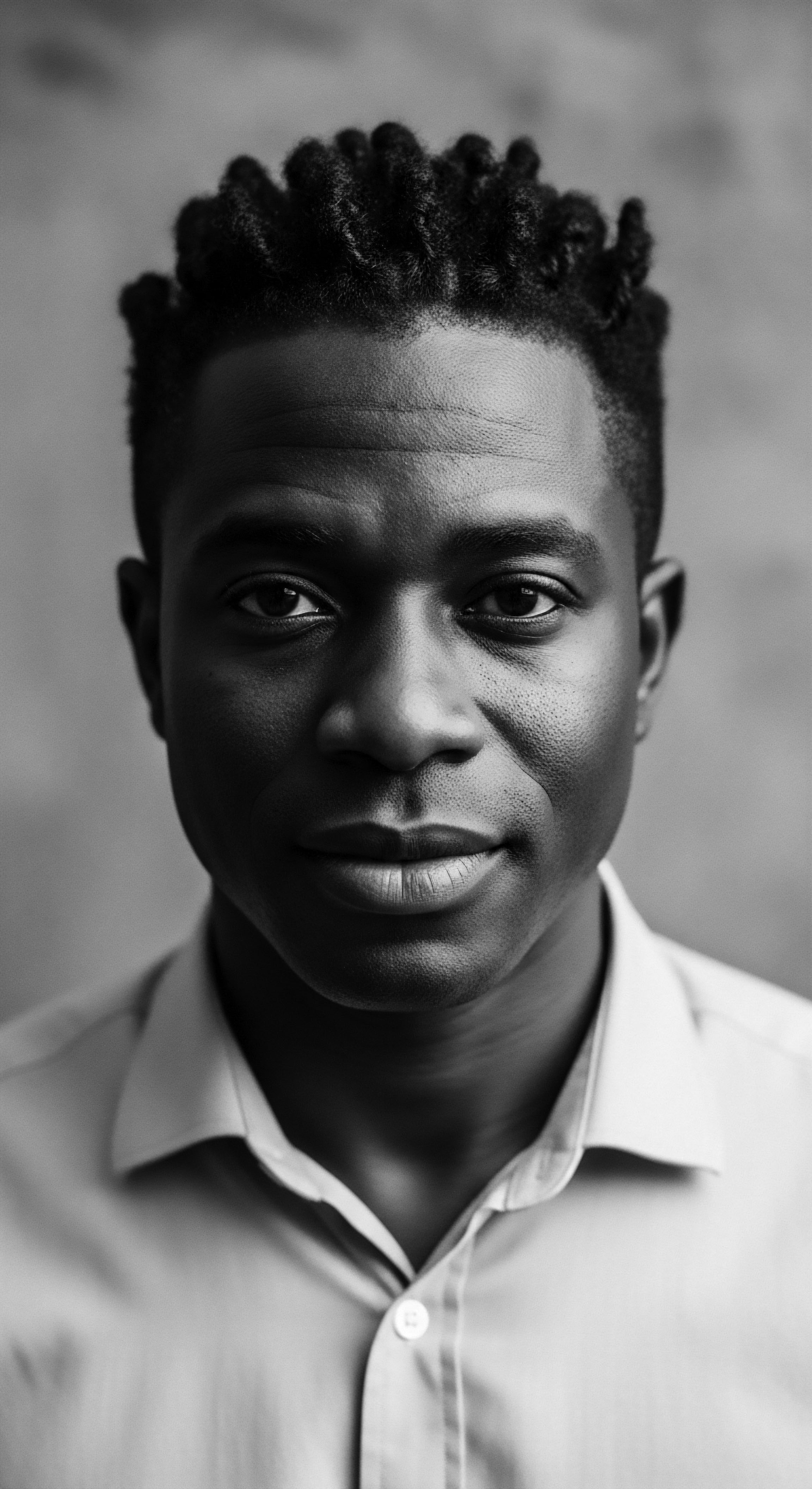
Intermediate
Moving beyond the foundational tenets, the intermediate delineation of Genetic Hair broadens our scope to include the interplay of multiple inherited factors and their complex manifestations across diverse human populations, particularly within the textured hair heritage of Black and mixed-race individuals. This is where the simple explanation of genetic predisposition begins to deepen, revealing how various genes contribute to the nuanced spectrum of hair forms we observe globally. It encompasses not just the single gene determining a broad trait, but the cumulative effect of many genetic markers, often working in concert, to produce the vast array of textures, from the softest waves to the most resilient coils.
The meaning of Genetic Hair at this level involves understanding its polygenic nature. Hair curl, for instance, is not typically governed by a single gene but by the additive influence of numerous gene variants. This is why, even within the same family, one might find a striking range of hair textures—from loosely spiraled ringlets to tightly packed kinks—even if all individuals share a common ancestry. Genes influence the shape of the hair follicle, which is elliptical for curly hair, and the way specific proteins, like keratins, are distributed and bonded within the hair shaft, ultimately shaping its outward appearance.
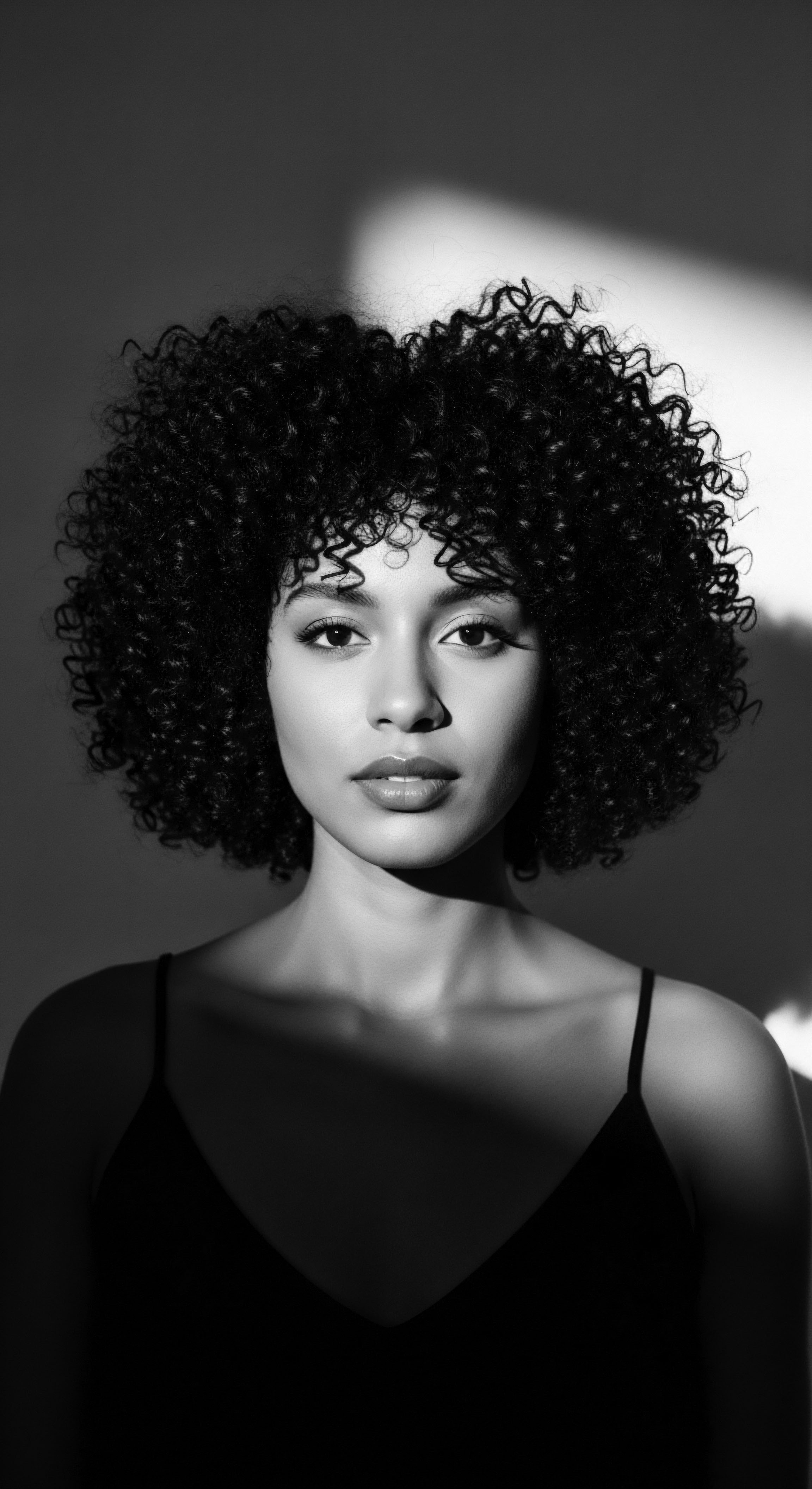
The Ancestral Hand in Hair’s Character
The collective inheritance of genetic markers profoundly shapes the unique characteristics of hair across populations. One remarkable example of this genetic influence, and a particularly illuminating thread in the discussion of ancestral heritage, resides in the study of the EDAR Gene. A specific variant of the ectodysplasin A receptor (EDAR), known as EDARV370A, is found predominantly in East Asian and Native American populations and is nearly absent in individuals of European and African descent (Kamberov et al. 2013).
This particular variant has been linked to several distinct physical traits, notably influencing thicker scalp hair and specific tooth morphology. Its prevalence, estimated to have reached fixation in East Asian populations by around 10,700 years ago, suggests a strong positive selection that shaped hair characteristics in these groups, contrasting with the ancestral versions of the gene found in African and European populations.
This specific case study of the EDAR gene offers an intriguing look at how inherited traits, seemingly singular, are interwoven with environmental adaptations and human migration patterns. While EDARV370A contributes to straighter, coarser hair in certain populations, the varied and often highly curved textures found in African hair are influenced by a distinct set of genetic factors that create the elliptical follicle shape and asymmetrical cellular behavior during hair growth. This divergence underscores how different ancestral journeys fostered distinct hair characteristics, each serving unique evolutionary and cultural purposes. The complex cellular machinery within the hair follicle—where elements like the dermal papilla and inner root sheath play their roles—are all under genetic orchestration, giving rise to the visible variations in human hair form.
The EDAR gene variant illustrates how distinct ancestral migrations sculpted hair traits, a testament to hair’s deep connection to human evolutionary pathways.
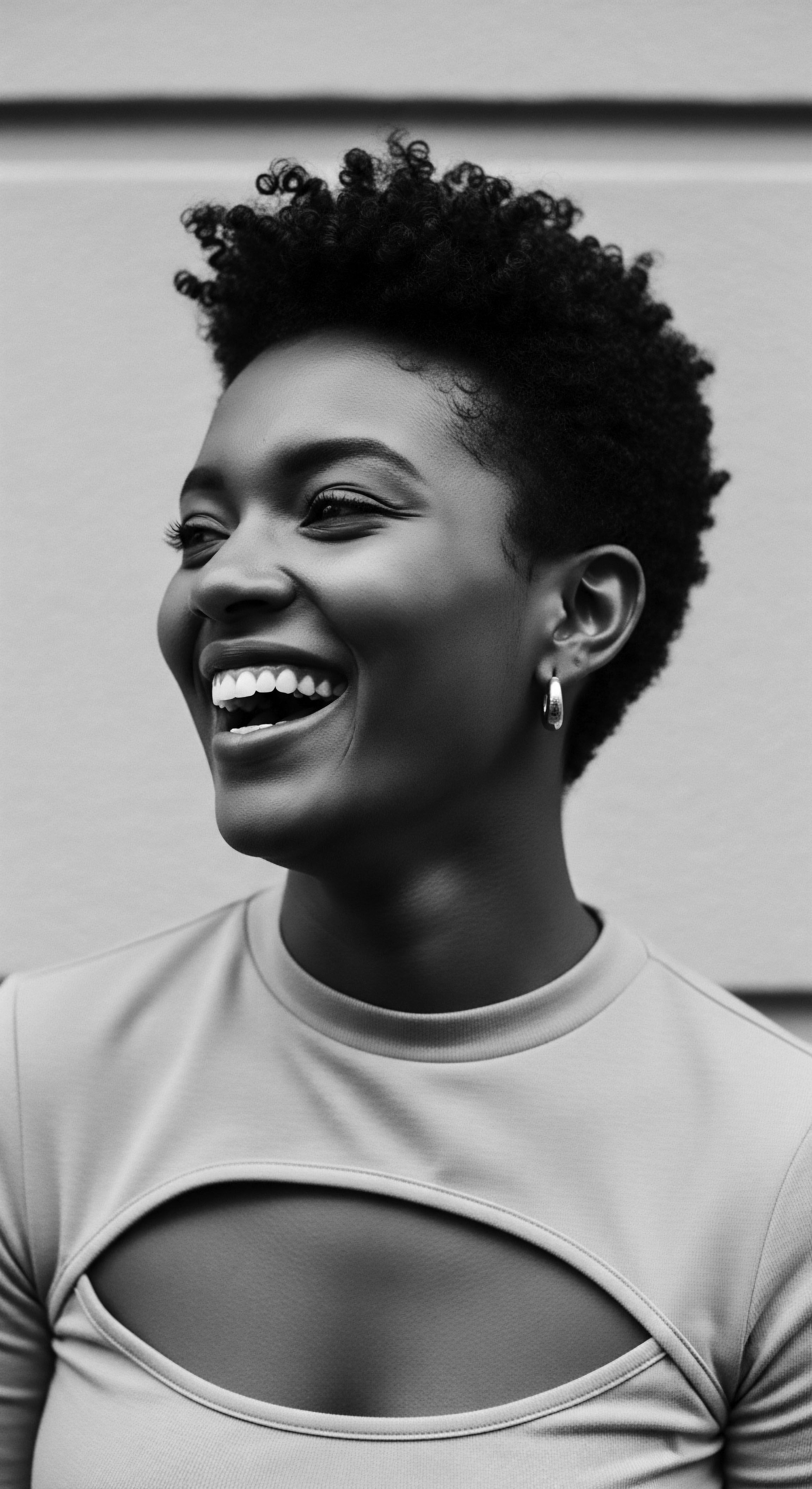
Hair as a Living Archive of Heritage
Understanding Genetic Hair at this intermediate level allows for a deeper appreciation of the living archive that hair embodies. Beyond the scientific nomenclature, it fosters a profound respect for the diversity within Black and mixed-race hair experiences. This perspective honors the resilience encoded within each curl and coil, reminding us that these textures are not accidents of nature but rather testaments to ancient wisdom, adaptation, and beauty that has been passed down through countless generations. The meaning deepens as we recognize that the very structure of textured hair, often more prone to breakage due to its elliptical shape and points of curvature, also inherently possesses a unique volume and protective capacity, qualities cherished and cared for through ancestral practices.
The cultural significance attached to these inherited traits is immense. Historically, in many African societies, hair acted as a profound identifier, signifying age, marital status, social rank, and even tribal affiliation. The practices surrounding hair care were communal rituals, fostering bonding and the transmission of knowledge.
This cultural memory, entwined with the genetic heritage, shapes how we perceive and care for Genetic Hair today. It is not merely about identifying a curl pattern; it is about recognizing the enduring wisdom of generations who understood their hair’s particular needs and crafted sophisticated methods of nourishment and adornment using the earth’s bounty.
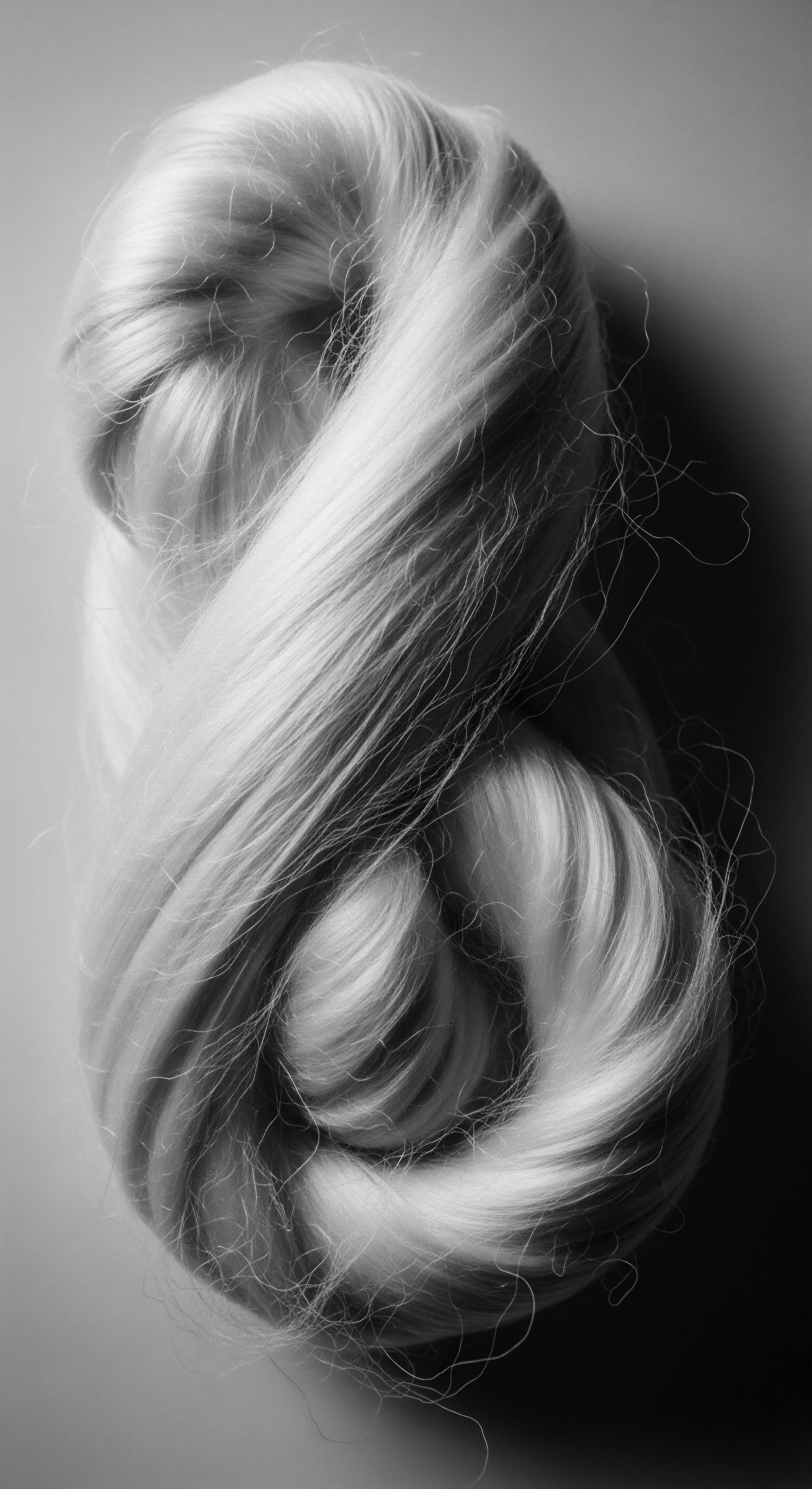
Academic
The academic definition of Genetic Hair transcends simple inherited traits, delving into the sophisticated molecular, cellular, and evolutionary mechanisms that dictate human hair morphology, particularly emphasizing its profound implications for textured hair within Black and mixed-race communities. This advanced interpretation is rooted in rigorous genetic research, anthropological studies, and a holistic understanding of how environmental pressures and cultural practices have co-evolved with genetic expression over millennia. It is a nuanced understanding that positions hair not simply as a biological appendage, but as a dynamic phenotype, deeply interwoven with identity, history, and wellness. Genetic Hair, from this perspective, represents the intricate interplay of polymorphic variations across multiple genes, the precise choreography of protein synthesis, and the micro-architecture of the hair follicle, all contributing to the remarkable diversity of human hair textures.
At its core, this academic meaning signifies the comprehensive genetic blueprint for hair characteristics. This blueprint dictates the cross-sectional shape of the hair follicle, its angle of growth relative to the scalp, and the asymmetrical distribution of keratinocytes within the follicle itself. These factors collectively determine whether a hair strand will be straight, wavy, curly, or coily.
For African-descendant hair, the characteristic elliptical follicle and the inherent twists and bends along the hair shaft contribute to its unique coiling patterns and volume. Research indicates that while hair’s biochemical composition across ethnicities is identical, its morphological differences, particularly its elliptical cross-section and twisted oval rod appearance, make highly textured hair more susceptible to knotting and breakage.
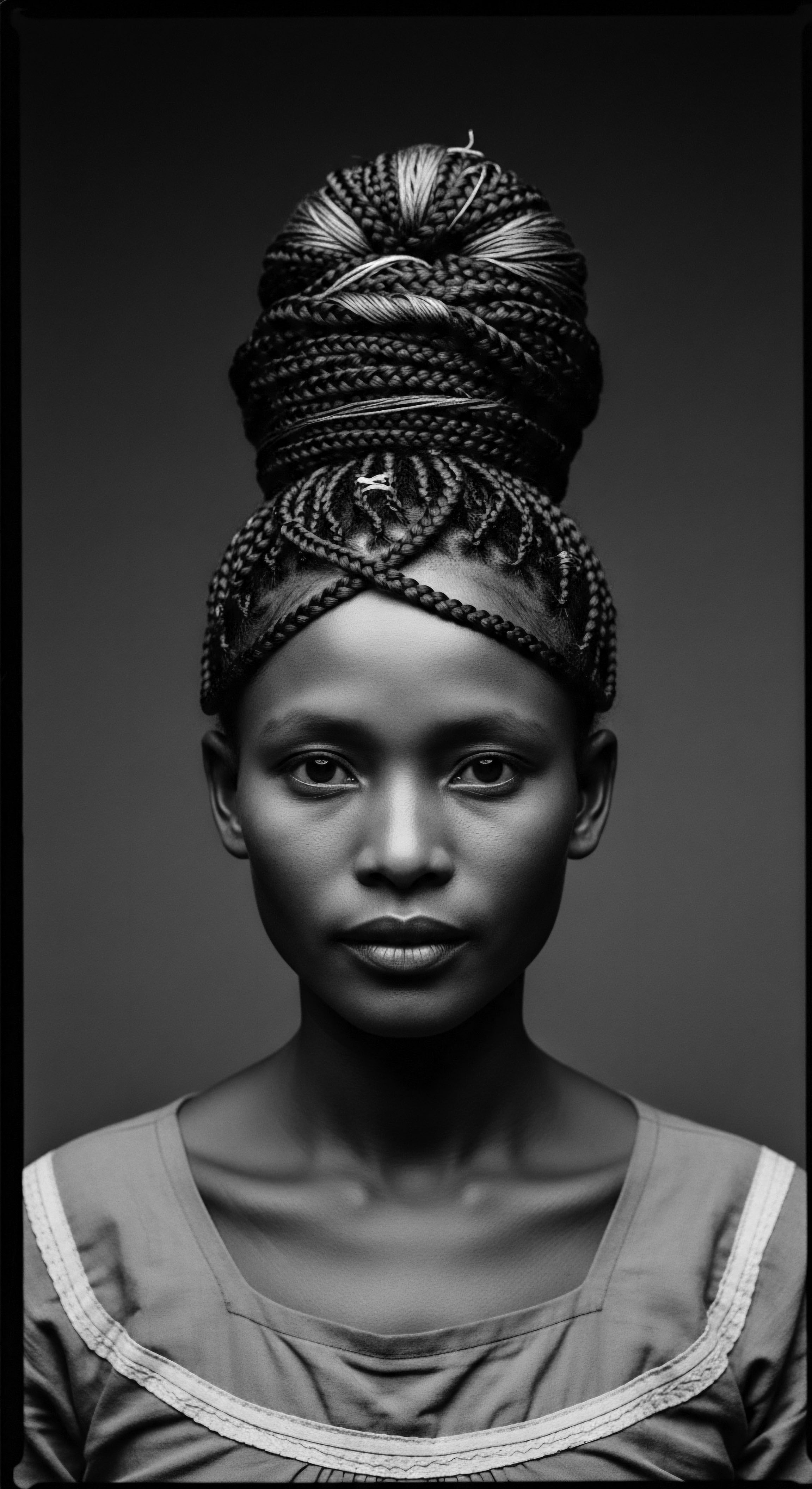
Molecular Architecture and the Helix’s Whisper
The genomic landscape influencing hair texture is complex, with numerous genes contributing to the overall phenotype. Key among these are genes like Trichohyalin (TCHH), EDAR (Ectodysplasin A Receptor), and WNT10A. The TCHH gene, for instance, plays a significant role in cross-linking keratin filaments into rigid structures, providing mechanical strength to hair follicles, and its variants are associated with a substantial proportion of hair curl variations, particularly in European populations. EDAR, as discussed, is more strongly associated with hair thickness and straightness in East Asian populations, highlighting geographically specific genetic adaptations.
WNT10A, a developmental gene, impacts hair morphology and cycling, and mutations in this gene are linked to malformed hair. The very existence of these genetic markers underscores the long arc of human adaptation, where hair texture, alongside skin pigmentation, served as a crucial adaptive trait in diverse climates.
The molecular and cellular dance within the hair follicle is orchestrated by these genetic instructions. The dermal papilla, a cluster of specialized cells at the base of the follicle, communicates with surrounding epithelial cells to direct hair growth and shape. In curly hair, this cellular communication leads to an asymmetrical arrangement of cells, prompting the hair shaft to curve as it grows.
The precision with which these processes occur, dictated by inherited sequences, allows for the remarkably consistent reproduction of hair texture throughout an individual’s life, despite the cyclical nature of hair growth. This intricate biological machinery, refined over countless generations, is the scientific basis for the enduring character of Genetic Hair.
Moreover, the meaning extends to the evolutionary pressures that sculpted these genetic predispositions. For populations originating in tropical climates, particularly those in Africa, tightly coiled hair is hypothesized to offer distinct thermoregulatory advantages. It creates an insulating layer that traps air close to the scalp, minimizing direct sun exposure while allowing for air circulation, thus aiding in scalp cooling.
This stands in stark contrast to straight hair, which may have provided better heat retention in colder environments. This deep connection between environmental adaptation and genetic expression reveals that Genetic Hair is not just about aesthetics; it is about survival, resilience, and the ingenious ways human biology responded to the world’s varied landscapes.
Academic inquiry into Genetic Hair reveals a tapestry of molecular directives and evolutionary pressures, where genes like TCHH, EDAR, and WNT10A orchestrate the nuanced dance of hair formation.
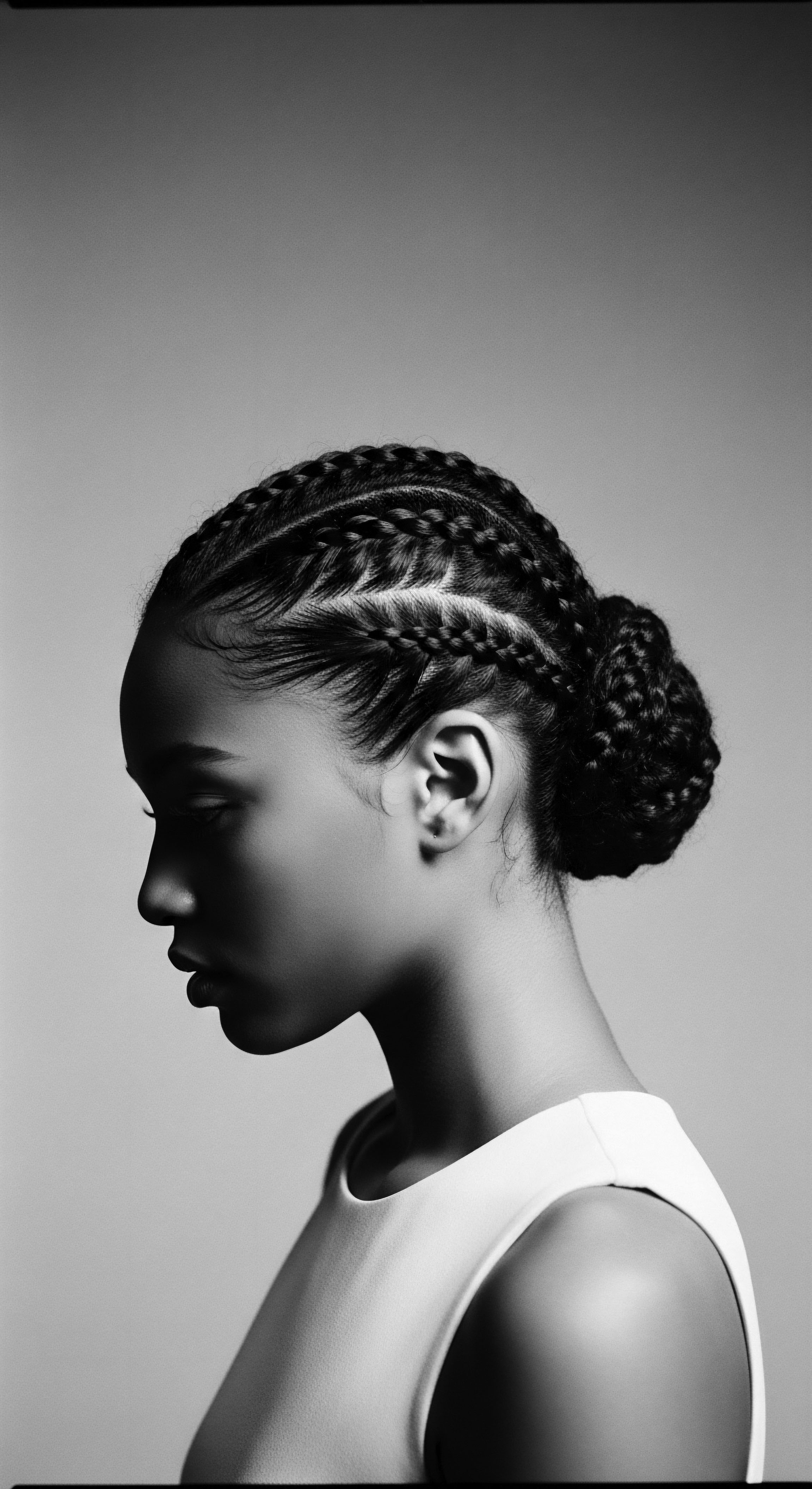
The Legacy of Care ❉ An Interconnected History
The scientific understanding of Genetic Hair finds a compelling parallel in the historical and cultural practices of Black and mixed-race communities. For centuries, across the African continent and within the diaspora, hair has served as a powerful cultural marker, denoting identity, status, and spiritual connection. The inherent characteristics of textured hair—its curl patterns, its unique moisture needs, and its tendency to shrink—necessitated specialized care practices that were developed and refined over generations. These practices were not merely cosmetic but deeply rooted in ancestral knowledge, often utilizing natural ingredients and communal rituals.
Consider the ancestral hair care practices of the Yoruba people of Southwestern Nigeria, where Hair Threading, known as “Irun Kiko,” has been a common tradition since the 15th century. This method involves wrapping hair with thread to stretch it, promote length retention, and protect it from breakage. The remarkable aspect of this practice, viewed through the lens of Genetic Hair, is its intuitive alignment with the biophysical properties of coiled hair. Coiled hair, with its numerous bends and twists, is inherently more prone to single strand knots and mechanical damage during manipulation when dry.
Threading, by gently stretching and protecting the hair, addresses these specific vulnerabilities, thereby enhancing hair health and promoting length retention in a way that modern science now validates. This serves as a powerful historical example of ancestral wisdom deeply understanding and responding to the unique demands of Genetic Hair, long before the advent of genetic sequencing or microscopic analysis.
The communal aspect of hair care in pre-colonial African societies further underscores this connection. Hair braiding and styling were often social activities, a time for bonding and the transmission of knowledge from elder to younger generations. In Ghana, for instance, precolonial feminine hair care was a shared responsibility among family and friends, performed on a pro bono basis. This cooperative approach to hair maintenance ensured that specialized techniques for nurturing genetically textured hair were preserved and passed down, embodying a holistic understanding of hair health that integrated community well-being with physical care.
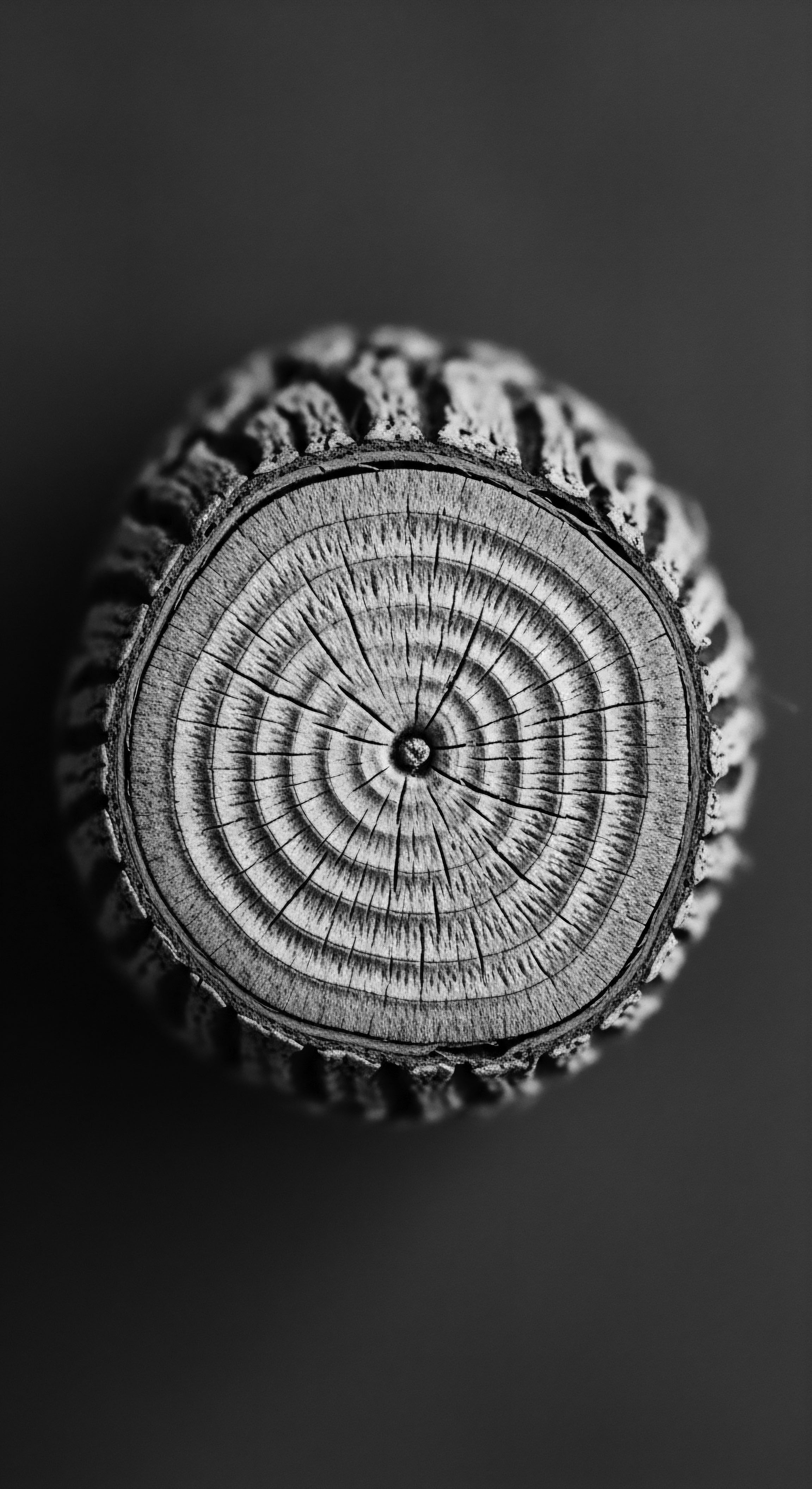
Contemporary Echoes and Challenges
In contemporary contexts, the implications of Genetic Hair, particularly for Black and mixed-race individuals, continue to unfold, often in complex ways. The natural hair movement, a reclaiming of ancestral hair textures, reflects a growing appreciation for the inherent beauty and resilience of genetically diverse hair forms. This movement is, in essence, a profound recognition of Genetic Hair as a source of pride and identity, a departure from historical pressures to conform to Eurocentric beauty standards that often necessitated altering natural curl patterns with harsh chemicals.
However, challenges persist. Despite the celebration of natural hair, studies indicate that products marketed to Black women, especially those for hair care, disproportionately contain hazardous chemicals linked to adverse health outcomes, including reproductive issues and certain cancers. For example, a report by the Environmental Working Group (EWG) revealed that a significant portion of hair relaxers, still used by some Black women, contain caustic ingredients like sodium hydroxide or formaldehyde-releasing preservatives.
This ongoing issue highlights a dissonance between the innate needs of genetically textured hair and the market’s offerings, often forcing a choice between perceived societal norms and health. It underscores the continued importance of informed choices that honor the natural state of Genetic Hair, aligning modern care with ancestral principles of safety and nourishment.
The meaning of Genetic Hair extends to its role in shaping economic landscapes and social perceptions. The Black haircare industry is a multi-billion-dollar enterprise, with Black women spending significantly more on hair products than other demographic groups. This economic reality, coupled with anecdotal evidence of “ethnic taxing” where textured hair services are priced higher, reveals systemic inequities that complicate the journey of embracing one’s Genetic Hair. Addressing these disparities requires not only a deeper understanding of hair biology but also a critical examination of beauty standards and market practices, fostering a more equitable and healthy environment for all hair types.
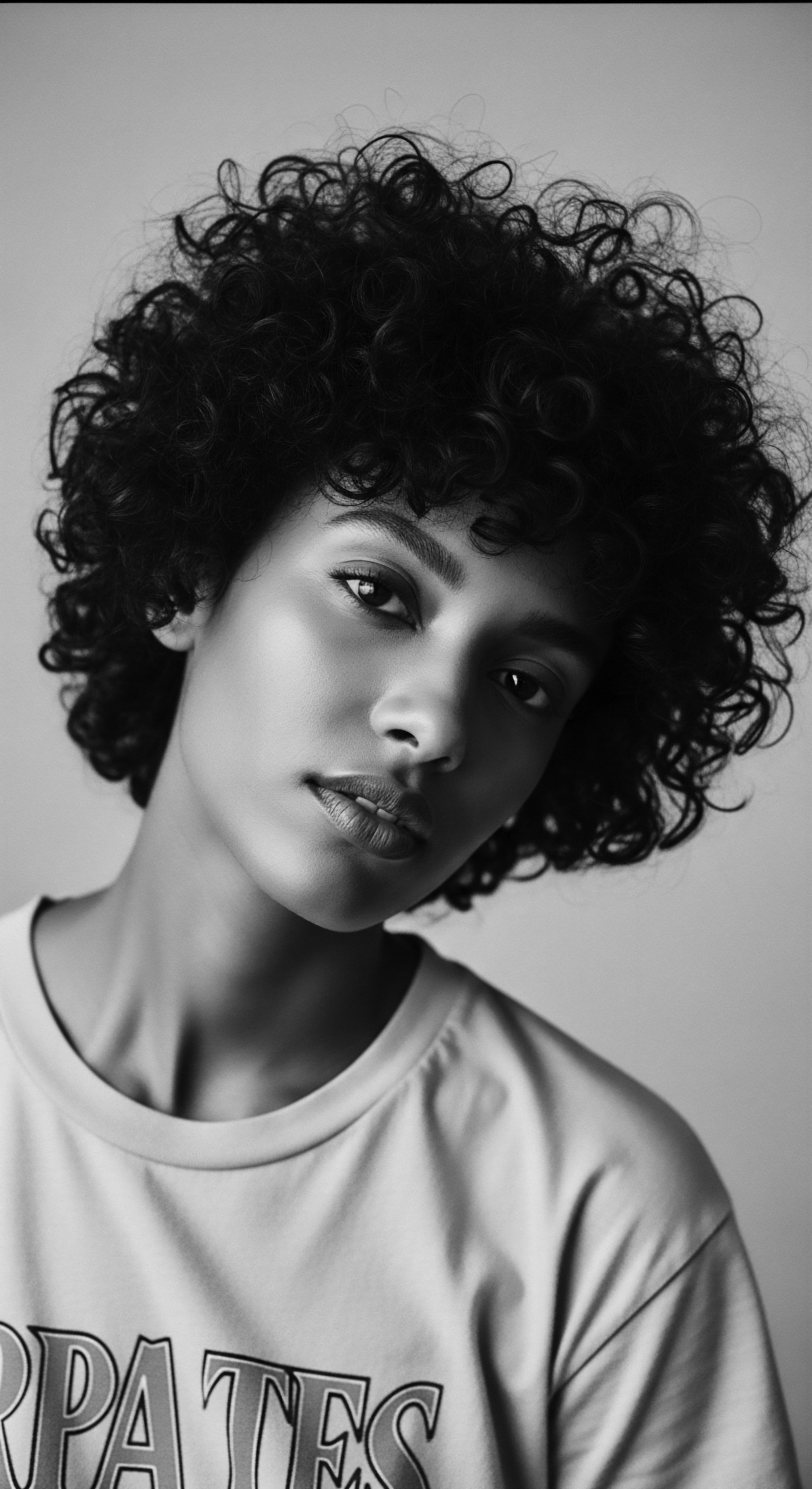
Genetic Markers and Hair’s Intrinsic Value
The ongoing scientific inquiry into the specific genetic markers that influence hair characteristics continues to expand our understanding of Genetic Hair. While the TCHH and EDAR genes are well-studied, researchers acknowledge that many additional genes contribute to the full spectrum of hair texture and thickness across various populations. The complexity of these genetic interactions suggests that predicting the exact curl pattern of an individual’s hair remains an active area of investigation, underscoring the remarkable biological individuality that Genetic Hair embodies.
- Trichohyalin (TCHH) ❉ This gene is fundamental to hair shaft strength, playing a role in the formation of keratin structures. Variations in TCHH account for a notable percentage of hair curl diversity, particularly in European populations.
- EDAR ❉ A variant of this gene, EDARV370A, is strongly associated with thicker, straighter hair and is prevalent in East Asian and Native American populations, offering an insight into regional genetic adaptations in hair morphology.
- P2RY5 (LPAR6) ❉ Mutations in this gene have been linked to hereditary “woolly hair,” characterized by coarse, dry, tightly curled, and sparse hair, indicating its influence on hair texture and density.
- WNT10A ❉ This gene is involved in developmental processes, including hair follicle formation and cycling, with its variations potentially leading to altered hair structure.
Beyond these specific genes, the science of Genetic Hair acknowledges the dynamic interplay between genetics and environmental factors. Hormones, medications, and chemical treatments can all temporarily or permanently alter hair characteristics, highlighting that while the genetic blueprint sets the foundation, external influences can shape its expression over a lifetime. However, the genetic predisposition remains the underlying truth, allowing the hair to return to its inherent texture after external factors are removed or diminish.
| Aspect of Genetic Hair Moisture Retention |
| Ancestral Understanding & Practice Application of indigenous oils (Shea butter) and butters to protect hair from dryness and breakage. |
| Modern Scientific Elucidation Scientific studies validate the occlusive and emollient properties of natural oils, enhancing hair’s lipid layer and reducing water loss. |
| Aspect of Genetic Hair Length Preservation |
| Ancestral Understanding & Practice Protective styling like threading and intricate braiding to minimize manipulation and safeguard fragile ends. |
| Modern Scientific Elucidation Research confirms that minimizing mechanical stress on textured hair (due to its elliptical shape and points of curvature) reduces breakage, promoting length retention. |
| Aspect of Genetic Hair Scalp Health |
| Ancestral Understanding & Practice Use of herbal rinses and natural cleansers to maintain a balanced scalp environment. |
| Modern Scientific Elucidation Modern dermatology emphasizes balanced scalp microbiota and avoiding harsh surfactants that strip natural oils, aligning with traditional approaches. |
| Aspect of Genetic Hair These parallels demonstrate the enduring wisdom of ancestral practices in caring for genetically unique hair textures, often validated by contemporary scientific inquiry. |
The academic pursuit of Genetic Hair also considers its psychological and social dimensions. The understanding of one’s inherited hair texture can foster a deeper connection to ancestry and cultural identity. For many, acknowledging their Genetic Hair is an act of self-acceptance and a rejection of Eurocentric beauty standards that have historically devalued textured hair.
This critical examination of hair from a scientific, historical, and cultural perspective enriches its meaning, positioning Genetic Hair as a powerful symbol of individual uniqueness and collective heritage. The profound journey of understanding our hair’s genetic roots is a step toward embracing the full spectrum of human diversity, celebrating each strand as a testament to an extraordinary biological and cultural lineage.
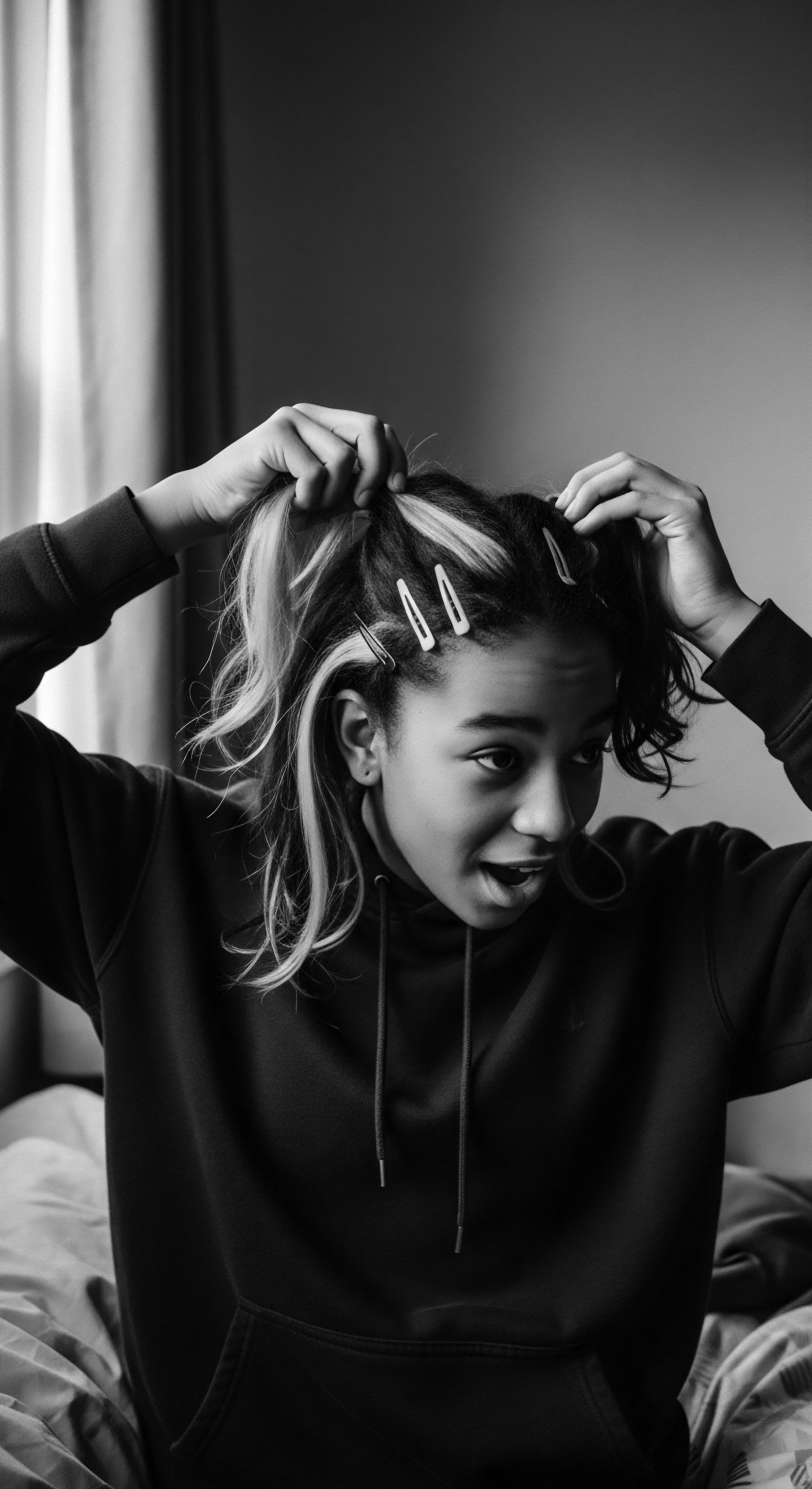
Reflection on the Heritage of Genetic Hair
The exploration of Genetic Hair has been a journey through ancestral landscapes and cellular intricacies, revealing its profound connections to heritage, particularly within Black and mixed-race communities. It becomes clear that hair, in its myriad forms and textures, is far more than a biological feature; it is a living chronicle, a soulful narrative etched into each strand, carrying the wisdom of generations. Our hair truly is an echo from the source, a palpable link to the earth and the people who walked before us, bearing the indelible marks of adaptation, resilience, and beauty.
The tender thread of care, passed down through oral traditions and communal practices, speaks to a deep, intuitive understanding of what our genetically inherited hair needs to flourish. The ancient Yoruba practice of hair threading, for instance, serves as a poignant reminder that long before microscopes revealed the elliptical cross-sections of coiled hair or geneticists identified the specific genes influencing its structure, our ancestors possessed an intimate knowledge of how to nurture and protect their unique textures. This knowledge, born from observation and lived experience, laid the groundwork for hair wellness that resonates with profound relevance even today.
Hair, a living chronicle, carries the wisdom of generations, reflecting a soulful narrative etched into each strand.
In the unbound helix of our contemporary lives, understanding Genetic Hair empowers us to make choices that honor our ancestral legacy while embracing modern insights. It invites us to consider the profound implications of our care practices, to choose products and routines that support the inherent health and vitality of our hair rather than attempting to coerce it into forms that defy its natural inclinations. This understanding fosters not just healthier hair, but a deeper sense of self, a reconnection to the unbroken chain of heritage that informs who we are.
Our hair stands as a testament to enduring spirit, a sacred part of our being that connects us to the past, grounds us in the present, and shapes our path forward. The story of Genetic Hair is a celebration of diversity, a call to reverence, and an affirmation of the intrinsic beauty woven into every curl, coil, and wave.

References
- BLAM UK CIC. (2022, September 15). The history of Black Hair. BLAM UK CIC.
- Kamberov, Y. G. Wang, S. Tan, J. Gerbault, P. Wark, A. Tan, L. Yang, Y. Li, S. Tang, K. Chen, H. et al. (2013). Modeling recent human evolution in mice by expression of a selected EDAR variant. Cell, 152(4), 691–702.
- Columbia University Medical Center. (2008, February 27). New Gene Involved In Determining Hair Texture And Density In Humans Discovered. ScienceDaily.
- Essel, K. (2017). Akan-Fante proverb ❉ ɔbaa n’enyimyam nye ne tsir hwin. (As cited in Botsio, L. (2023). Historical Roots of Makai Hairstyle of Elmina People of Ghana. International Journal of Arts and Social Science, 6(10), 216-220.)
- Happi. (2021, October 5). Hair Care Is a Focus in Africa. Happi.
- International Journal of Arts and Social Science. (2023, October). Historical Roots of Makai Hairstyle of Elmina People of Ghana.
- JSTOR Daily. (2018, October 11). Why Do Some People Have Curly Hair and Others Straight? JSTOR Daily.
- Livara Natural Organics. (2023, February 7). Black History Month ❉ The Rich History of Our African Hair. Livara Natural Organics.
- MedlinePlus. (2022, July 13). Is hair texture determined by genetics? MedlinePlus.
- MDPI. (2023, September 22). The Genomic Variation in Textured Hair ❉ Implications in Developing a Holistic Hair Care Routine. MDPI.
- PubMed. (2013, February 14). Enhanced ectodysplasin-A receptor (EDAR) signaling alters multiple fiber characteristics to produce the East Asian hair form. PubMed.
- Research Matters. (2019, July 20). The tangled tale of curly hair. Research Matters.
- Substack. (2025, May 4). Ancestral Hair Rituals to Nourish Your Hair and Soul. Substack.
- The Earth Collective. (2024, January 12). The Role of Genetics in Indian Hair Care. The Earth Collective.
- The New York Times. (2024, June 13). Uncovering the dangers of hair products marketed to Black women, girls. (As cited in Harvard Medical School, 2024, June 15, “Uncovering the dangers of hair products marketed to Black women, girls”.)
- The Scientific American. (2025, February 21). Where Did Curly Hair Come From? Biological Anthropology May Provide Insights. YouTube.
- US National Library of Medicine. (2025, February 11). Higher hazards persist in personal care products marketed to Black women, report reveals. PMC.
- US National Library of Medicine. (2015, May 12). Contemporary African-American Hair Care Practices. PMC.
- Westgate, G. E. Ginger, R. S. & Green, M. R. (2017). The what, why and how of curly hair ❉ a review. Experimental Dermatology, 26(9), 748-757.
